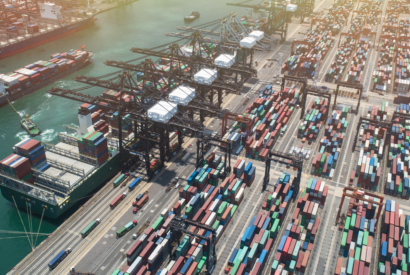Online retailers are moving away from standard text search engines to embrace something more visual.
Over the last few years we’ve seen several online businesses, in particular startups, developing a new kind of Visual Search engine rather than relying on traditional Text Search.
This new kind of search is proving to work particularly well in fashion businesses as shopping for clothes is a hugely visual experience. Customer inspiration increasingly comes from celebrity magazines and snaps of their friends and finding the correct descriptive words to type into an uncomprehending search box can be an uphill struggle.
And so retailers and customers are finding that search engines based on imagery are proving faster, more convenient and much more intuitive in today’s visually and digitally-dominated world.
The dramatic shift to mobile browsing, and the tediousness of text searching on smaller devices, also lends itself well to the simpler searches which are done in Visual Search engines.
An example of this new search technology is being utilised by Donde Fashion. Here, customers can do the usual searches across multiple brands using filters for clothing type, price, color and pattern.
However, in a bid to make their search easier, quicker, and able to return better search results, they have abandoned tranditional text search and instead offers a series of icons with which to search. So users simply tap on an icon for a specific clothing item and then choose a specific color, cut and price, to be presented with all items that (broadly) match that description. It allows for more specific searching to take you to what you want to find more quickly,
Given the aim of a search engine, which is to drive sales by enabling customers to discover clothes which they are both looking for and also those they might not necessarily have considered, then it is definitely not in a retailer’s interests to return a very exact match… and so it proves here, with a certain degree of flexibility in what is shown.
Another piece of tech takes Visual Search a step further by actually analysing image content to present to customers products which bear a resemblance to what’s in the picture.
An example of this can be seen via a new fashion-focussed app called Craves, which operates by directing customers directly to retailers in exchange for a slice of affiliate revenue. The photos can be taken directly in the Craves app or can be uploaded directly from a camera. Snap Fashion is another fashion start up which does something similar for men’s clothes.
Beyond just serving as a fashion-finding utility, apps can use their data to have a social component. For instance, Craves allows its customers to follow friends and selected influencers, as well as browsing trending items and receiving sale notifications.

So there are a lot of forward-thinking start ups out there who are really exploring the possibilities of Visual Search. And finally, the granddaddy of them all, Asos, is dipping its toe in as well.
Having launched way back in 2000, the 17 year old veteran of e-commerce says that an enormous 80% of its UK traffic now comes from mobile devices. So with this shift to mobile it would seem inevitable to eventually consider a move into Visual Search, which it is indeed doing now (partnering with an unnamed startup to deliver the tech).
But it’s not just fashion retailers who are harnessing the power (and meaning) of the humble digital image. Tech companies are working with AI technology to interpret images as data to be collected, analyzed and acted upon.
Google is once again at the forefront of this. They recently unveiled a prototype “Google Lens” where, as the company explained, your smartphone camera won’t just see what you see, but will also understand what you see to help you take action.
The technology basically turns the camera from a passive tool that’s capturing the world around you into one that’s allowing you to interact with whatever’s in your camera’s viewfinder.
And they have concrete examples of how Google Lens could be used. You could point your camera at something and Lens tells you what it is, such as identifying that flower you’re preparing to photograph.
Or Lens could perform a common task, such as connecting you to a domestic Wi-Fi network by taking a photo of the sticker on the router.
How about if you hold your camera up to a music concert poster, Google Lens pulls up info on ticket sales – and adds it to your calendar if you ask. Google Lens isn’t live yet however there’s potential for it to be a real game changer.
So as we can see, it’s clear that there is enormous potential for images to be used as meaningful pieces of data which can be analyzed and acted upon. Wonder what’s around the corner?
Bryony Graham
Further Reading




